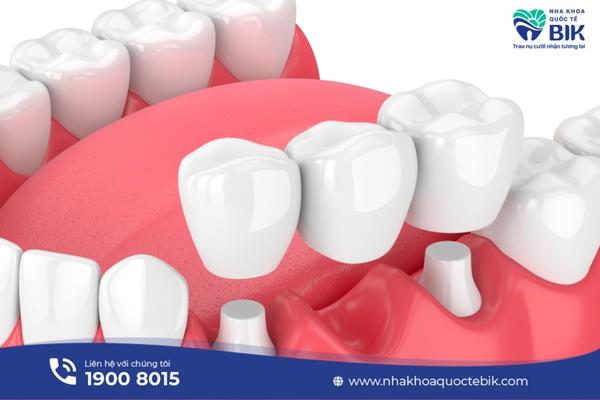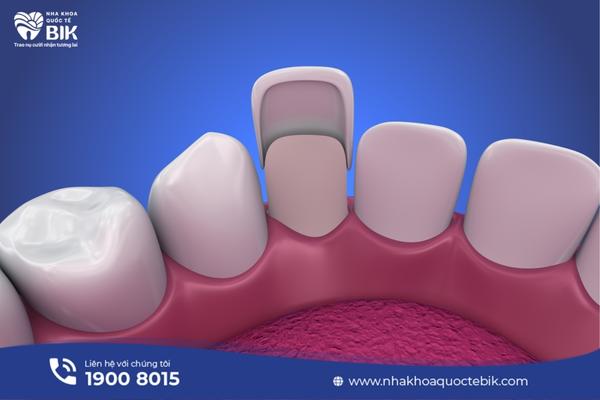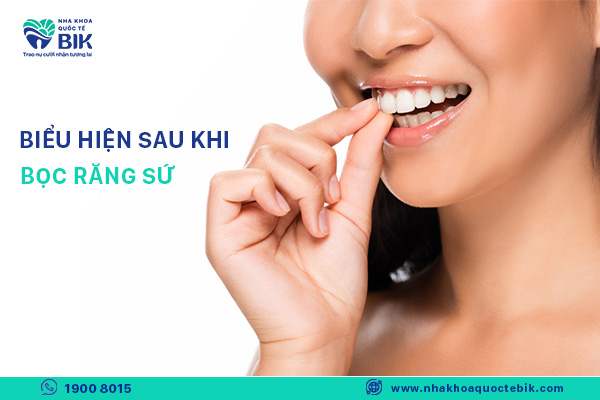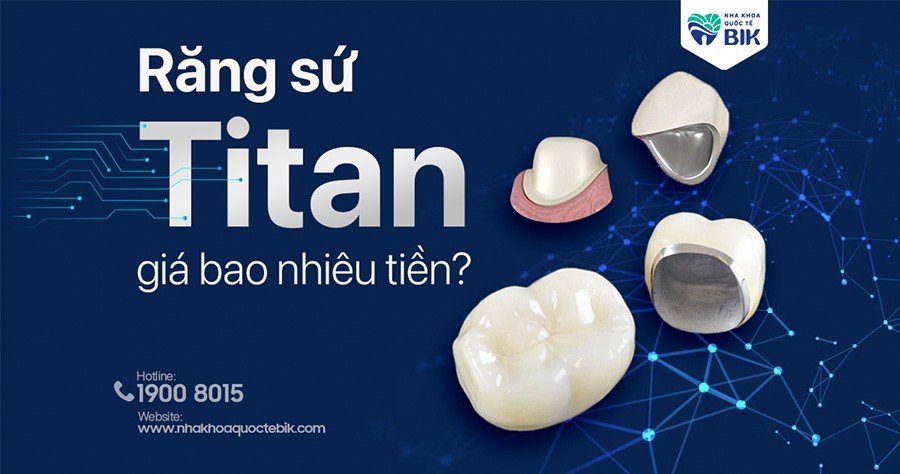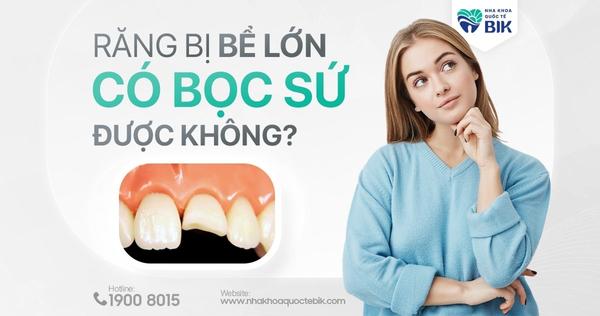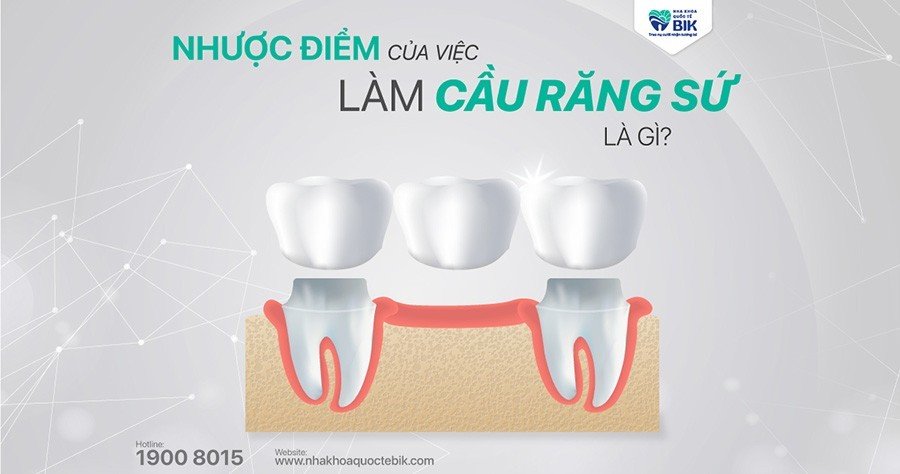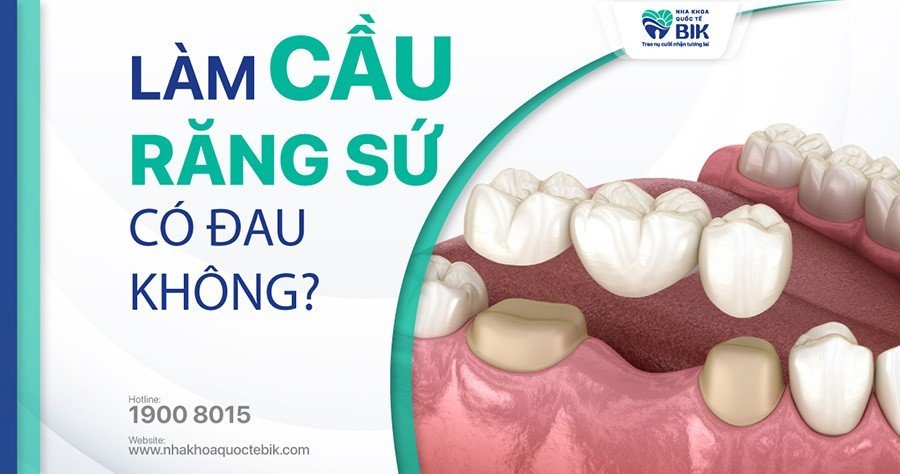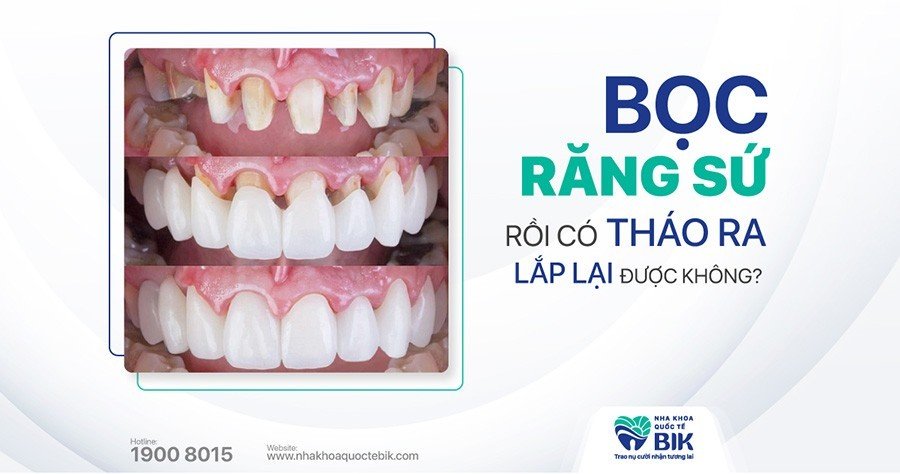
Porcelain crowns are a restorative method that effectively helps to overcome defects on teeth such as breakage, chipping, decay, etc. Accordingly, whether porcelain crowns can be removed is a question of many people. Let’s find out with BIK International Dentistry in the article below!
1. Can porcelain crowns be removed?
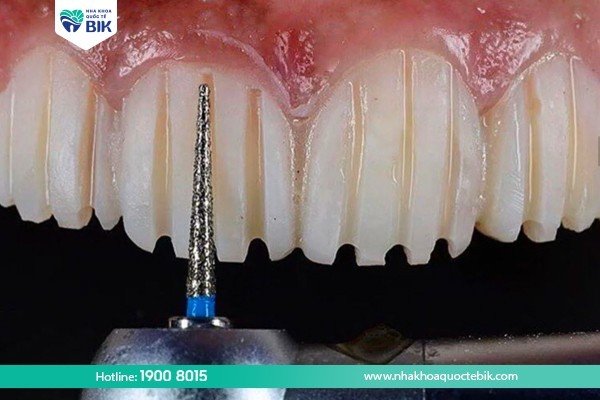
Can porcelain crowns be removed?
Are you wondering if porcelain crowns can be removed? Porcelain crowns are a fairly common cosmetic restoration technique for teeth today, applied to cases of tooth decay, cracks, breaks, gaps with not too large gaps,… With this method, the doctor will grind away a layer of enamel of the tooth that needs restoration according to a certain ratio to make a support for attaching the porcelain crown on top. At this time, both aesthetics and chewing function will be guaranteed to be restored naturally like real teeth.
However, during use, customers may also encounter some problems such as loose porcelain teeth, chipping, or pain in the real teeth inside, etc. In these cases, the doctor may prescribe removing the porcelain crown to completely fix it and then reinstalling it. However, removing porcelain teeth can only be done by highly skilled and experienced doctors to minimize pain for customers.
2. Can removable porcelain teeth be reinstalled?
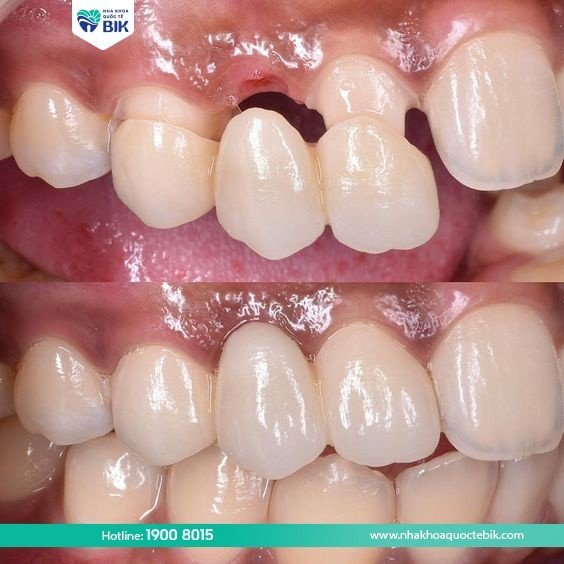
Can porcelain crowns be removed?
Can removable porcelain crowns be replaced? Doctors often recommend removing porcelain crowns in the following cases:
Gingivitis after porcelain crowns
Gingivitis after porcelain crowns is a fairly common condition if the dentist is not careful to intervene too deeply into the tooth structure during the grinding process. At this time, bacteria can easily penetrate inside and damage the root tooth. When the tooth is attacked, the soft tissue can be affected, leading to inflammation, ulcers and unpleasant odors.
In addition, if the technician is not careful when making the porcelain teeth, causing them to not fit tightly against the gums, it will cause food to get stuck, leading to gingivitis. If not treated promptly, it will directly affect the teeth, causing them to loosen and possibly fall out.
Long-term pain
The feeling of pain after porcelain teeth is covered will certainly appear when the anesthetic gradually wears off, but usually only lasts about 1 – 2 days. If the pain continues without signs of improvement, the customer should go to the dentist immediately for timely treatment.
The cause of this condition may be that the doctor did not treat dental diseases before covering the teeth with porcelain teeth or was not careful to affect the tooth pulp while grinding the stump.
Broken porcelain teeth
Although they have high resistance, in reality, porcelain teeth can still break when subjected to too much force from the chewing process or strong impact. In addition, if you are unlucky enough to use a poor quality porcelain crown, it will easily break or crack after a short period of use.
Teeth with other oral diseases
In the case of porcelain teeth that are not tightly attached to the real tooth stump, it will create gaps that allow bacteria to easily penetrate inside and attack the real tooth stump. This can cause pain and lead to some oral diseases such as pulpitis, tooth decay, etc. If you want to completely fix it, you need to remove the porcelain crown and reinstall it after it has been cured.
3. Porcelain tooth removal process at BIK International Dental Clinic
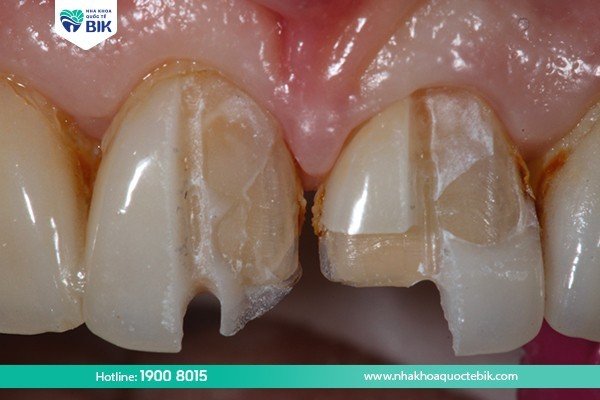
How to remove porcelain crowns?
The process of removing porcelain crowns and re-covering them at BIK International Dental Clinic takes place in the following order:
Anesthesia
After a general examination and the decision to remove the porcelain tooth, the doctor will clean the teeth through steps such as scaling, cleaning the oral cavity, and injecting local anesthesia to make the patient feel more comfortable during the procedure.
Removing the porcelain crown
Depending on each person’s specific oral condition, the doctor will choose 1 of 2 ways to remove the porcelain tooth. The first way is to cut the porcelain crown into small pieces and then carefully remove each piece, avoiding collisions that damage the tooth stump as well as the soft tissues inside. Or the doctor can grind around the porcelain tooth until the frame is exposed, then remove the porcelain tooth.
Taking an impression of the porcelain tooth
After treatment and thoroughly fixing the problems affecting the porcelain tooth, the customer will have their teeth imprinted to proceed with the fabrication of a new porcelain crown to replace it.
Reinstalling the new porcelain tooth
After the porcelain tooth is completely fabricated, the patient will be scheduled to come to the clinic to try it on and adjust the bite, ensuring that there is no entanglement or discomfort. After the customer is satisfied, the doctor will proceed to fix it with specialized dental glue.
4. Does it hurt to remove porcelain teeth?
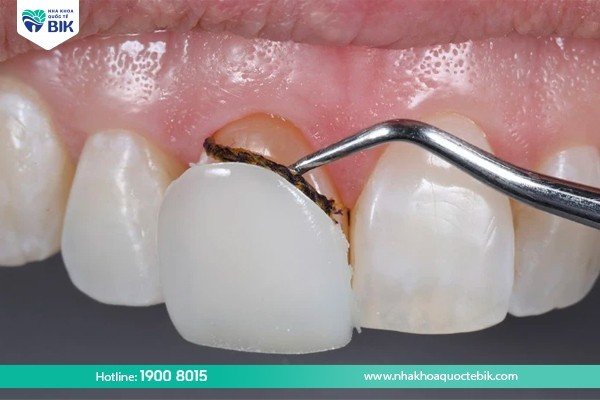
Does it hurt to remove porcelain teeth?
In fact, removing porcelain teeth requires a significant amount of force, so it is inevitable that customers will feel pain and discomfort. Therefore, before performing, the doctor will inject anesthesia to make the customer feel more comfortable and not have to worry about whether removing and reinstalling the porcelain crown will hurt.
In addition, if the customer chooses a reputable dental clinic, having the porcelain crown removed by a highly qualified doctor with the support of modern equipment, the pain will also be significantly reduced. The entire process of removing and reinstalling the porcelain crown is guaranteed to be quick and safe.
5. Notes when removing porcelain crowns
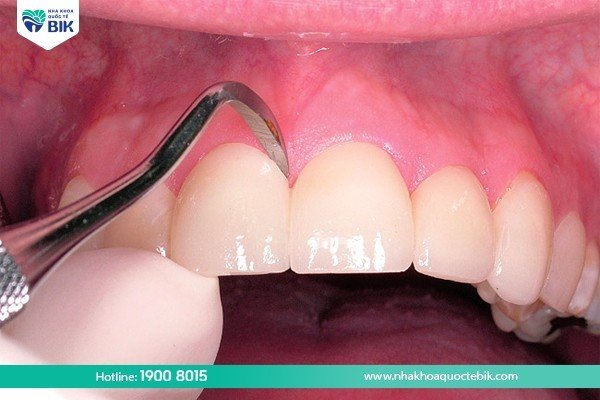
Some notes when removing porcelain crowns
– Choose a reputable dental clinic with a team of highly skilled doctors with many years of experience in the profession to ensure that the process of removing and reinstalling porcelain crowns is quick, safe and painless.
– After reinstalling new porcelain crowns, you should limit eating foods that are too hard, too chewy, or foods that are too hot or too cold to avoid affecting the real tooth stump that is still sensitive.
– Supplement calcium found in fish, eggs, shrimp, crab, milk, etc. to help strengthen teeth.
– Brush your teeth at least twice a day with a soft-bristled toothbrush and moderate brushing force.
– Visit the dentist for regular dental check-ups at least once every 6 months so that the doctor can better monitor your oral health and promptly handle any problems that arise.
Conclusion
Hopefully, through the above article, you have the answer to the question: Can porcelain crowns be removed? The doctor will decide which method is most suitable for each customer’s dental condition to ensure absolute safety. Customers should choose to remove porcelain crowns and redo them at a reputable dental facility with a team of doctors with many years of experience so that the treatment can be carried out quickly and effectively.

